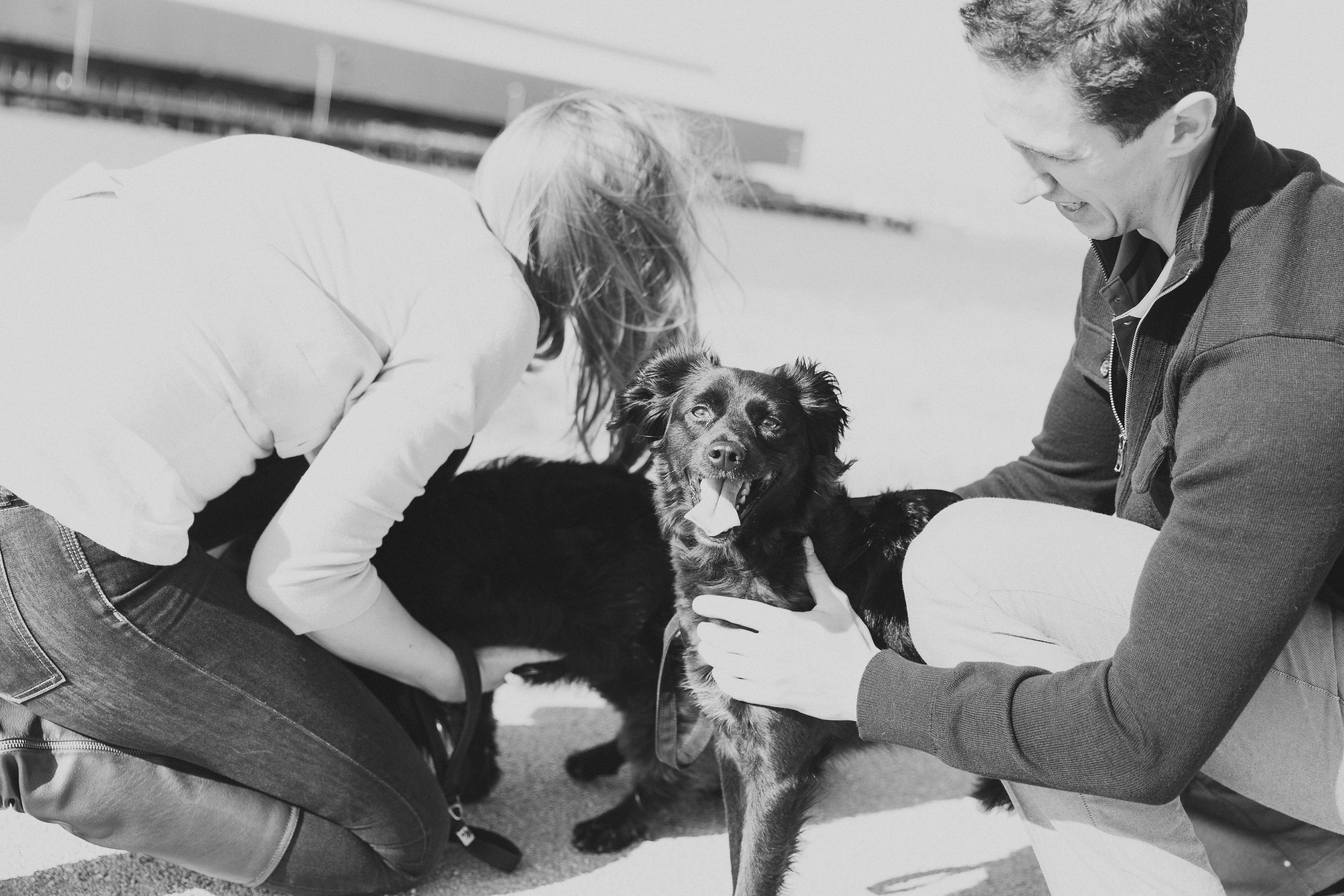As a whole, many of the dogs that I see come in for training arrive on my doorstep due to unsavory behaviors that a client is trying to train out of their dog. Many of these behaviors revolve around fear or aggression, such as reactivity. Removing undesirable behaviors from a dog’s natural set of responses can prove to be a challenging task – it does not happen immediately, and it requires some systematic work to help a dog to replace a poor behavior pattern with something that is more desirable.
Counter conditioning and desensitization are two corner stone concepts that are often used in this process. Counter conditioning is the process where you train your dog to alter their reaction to a stimulus and offer a behavior that is different than what they are currently displaying. In order to successfully accomplish this, you need to identify what behavior you would prefer your dog to do in place of their current response. For example, a dog that is reactive towards other dogs on leash, you may prefer that when your dog sees another dog that they sit and give you attention instead. You need to condition the replacement behavior prior to expecting this in a highly stimulating situation. In order to make this successful, you need to pair it with systematic desensitization.
“In order to make this successful, you need to pair it with systematic desensitization.”
Defined, desensitization is the process by which you slowly expose the dog to a stimulus that elicits an undesirable response. Moving slowly for this is the most crucial part of this process that handlers often times dismiss. You want to build reliability for replacement behaviors with no distractions first, and then begin working with distance. For example, if your dog is leash reactive towards bicycles, teach them to sit and focus on you with no distractions first. When that has become reliable, you want to start introducing the triggers from a far distance. Play with your dog’s initial threshold, and build up to working closer and closer to the trigger. It takes time, and rushing the process often creates frustration for both the dog and the handler.
By working with counter conditioning and desensitization together and systematically, you can often decrease undesirable behaviors stemming from fear or aggression. If you are dealing with overt and active aggression, it is highly recommended that you elicit the assistance of a trainer well versed in the behavioral issues you are looking to mediate. Understanding this process, though, well better prepare you for the work ahead and the theory behind the steps you are taking to better improve your dog’s behavior!

If you enjoyed this post, you should read Dog Obesity: Is It Really That Bad? here.
Learn more about Marie from our About Us page!
